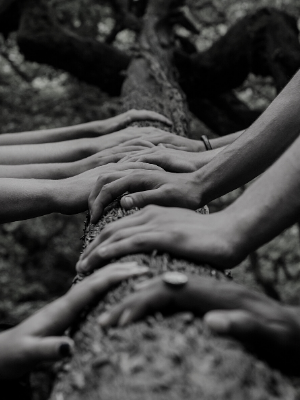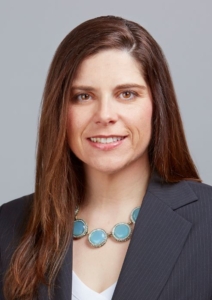 It feels that Artificial intelligence (AI) has really gone from feeling opaque and slightly in the realms of science fiction to current reality with Chat GPT now partly academically approved and AI of all types – from Bing’s chat GPT ‘wanting to be alive’ Jungesque aspirations this week to Elon Musk’s perhaps legitimate fear of AI to the ‘metaverse’ – being discussed at family gatherings. Surprisingly, or perhaps right on time, the UN Women 67th Annual Commission on the Status of Women International Women’s Day 2023 has a theme of “DigitALL: Innovation and technology for gender equality.” With the hashtag #Poweron, the focus is on the opportunities that technology has to create access to work opportunities and services for more parity for women across the world, while reducing the internet’s facilitation and spread of sexual violence.
It feels that Artificial intelligence (AI) has really gone from feeling opaque and slightly in the realms of science fiction to current reality with Chat GPT now partly academically approved and AI of all types – from Bing’s chat GPT ‘wanting to be alive’ Jungesque aspirations this week to Elon Musk’s perhaps legitimate fear of AI to the ‘metaverse’ – being discussed at family gatherings. Surprisingly, or perhaps right on time, the UN Women 67th Annual Commission on the Status of Women International Women’s Day 2023 has a theme of “DigitALL: Innovation and technology for gender equality.” With the hashtag #Poweron, the focus is on the opportunities that technology has to create access to work opportunities and services for more parity for women across the world, while reducing the internet’s facilitation and spread of sexual violence.
AI Issues From a Career Perspective for Women
Algorithms and AI can add another layer to bias and stereotyping beyond the human aspects that we all work so hard to defuse. Just under 80% of people who work in AI are men and the systems are entrenched in language – benign at best, purposely coded at worst with “lesser than” logic patterns. AI has been found to have biases against women and from a career perspective this has been understood most in hiring processes with Amazon scrapping their AI for recruiting for some of these reasons. Machine learning has shown to replicate male and white visibility with higher values given to data and images of white men. In The MIT Sloan Review, invisibility and erasure was discussed when it comes to ethnic diversity in facial recognition, with the topic causing a furor last June when President Obama’s face was machine refined as a high pixel image of a white man.
There are huge opportunities in AI though from a career breadth and depth perspective. AI is and will be in our lives more and more with wearables being the predicted game changer for healthcare. Other industries like financial services and even your digital shopping cart are heavily investing in AI and machine learning. It could it be applied to big issues like carbon farming practices and climate disaster and climate migrant preparation related challenges. And job roles and skillsets that represent a cross-section of disciplines are increasingly relevant and necessary, so coming from a STEM background is not a prerequisite for getting involved.
What are the Social Issues?
The issue behind technology is always based in human behaviors from who creates what, how and why, to who uses the product or service and for what end. How much humanity is in avatars and online commenters and how people behave online versus in real life has been a decade plus study. Do people act differently when they have anonymity or are without nonverbal cues? How does life online inform real life and vice versa? Apparently, moral outrage gets reposted 20% more than regular statements. The Pew Center has a body of research stating online harassment to be around 45% for men especially around topics of politics while fewer women report this. But, female politicians face verbal abuse with 39% of tweets about females in politics containing problematic threats, as do female journalists. Women are more likely to be sexually harassed or threatened with sexual violence online with image sharing, revenge porn and sextortion being part of this century so far.
Legislation is slowly catching up in Europe and the US with The White House launching the White House Task Force to Address Online Harassment and Abuse in 2022 to tackle online issues including sexual violence, abuse and sharing of files against women, and also child sexual abuse material (CSAM) sharing. Files containing CSAM have increased exponentially with 89.1 million files being reported in 2021 alone and the Legal 500 recently published a study entitled “Is it time to age gate the internet?” citing demand by internet to view child abuse to be increasing significantly. Harrowing as this is to report the hundreds of percent increase for demand of this terrible societal scourge, it is entirely important to understand how technology can help solve for issues as well as replicate problems. It does require people to think about hard things, have difficult conversations and take actions – such as code and AI for good not evil. For example, Thorn.org works to help via code to tag material to stop the spread of files, and in the UK and EU, there are similar technologies that all companies can access. We all need to work to solve real issues that degrade people as well as for democracy and opportunity for all humans.
Women’s lives is an increasing issue with discussions at major platforms and within governments ongoing on how to truly parse and filter empowering content regarding fitness, breastfeeding and women’s health from adult consensual content from non-consensual violence and assault; first to third world. Society at large from a behavioral perspective is again acceptably and overtly anti- women when it comes to dignity and personal sovereignty it seems. From dating apps and their unsolicited genital pictures and deepfakes to permanent perennial abuse images that never let the victim truly recover and all that is in between, it is hard to avoid pondering the nuances of the internet being a mirror or a vehicle to human darkness?
What Can You Do To Be Part of the Solution?
#1 Support with time and money STEM and coding programs for girls and women such as Girls Who Code or Black Girls Code or anitab.org or NCWIT or TCGi Foundation from Avis Yates Rivers. Encourage any girl or young woman you know to get into STEM. There are many pathways.
#2 Hire women into tech jobs, mentor women where you can, be the sponsor where you can!
#3 Have difficult and unsavory conversations with your kids about what is ok and what is not, and what to do if they see something awful on the internet.
#4 Continue the obviously much needed socio-cultural and psychological work for all humans to instill ethical boundaries in our boys and men (and girls and women) to help stop casual sexual and physical violence in real life as well as virtual world, the mantra ‘boys will be boys’ has to stop now so that girls can be girls, safely.
#5 Fund the solutions. Consider donating to Thorn or a similar organization that provides technical solutions, advocacy, support or education on the topic of CSAM or gender/sexual violence and sex trafficking such as RAINN or New Life, New Friends.
Either way, having awareness that there is a virtual world that replicates some of the real world’s most difficult challenges regarding gender is the conversational entry point into an inevitable new world. With more women being involved in building technology, and more women worldwide having equal access to technology, we hold out hope that we engineer AI for the good of women’s lives and towards the collective good.
By Nicki Gilmour





 By Laura Keidan Martin, National Chair of Katten Muchin Rosenman’s Women’s Leadership Forum and member of the firm’s Board of Directors and Executive Committee
By Laura Keidan Martin, National Chair of Katten Muchin Rosenman’s Women’s Leadership Forum and member of the firm’s Board of Directors and Executive Committee
 By Dale Meikle, PwC
By Dale Meikle, PwC By Nicki Gilmour
By Nicki Gilmour
